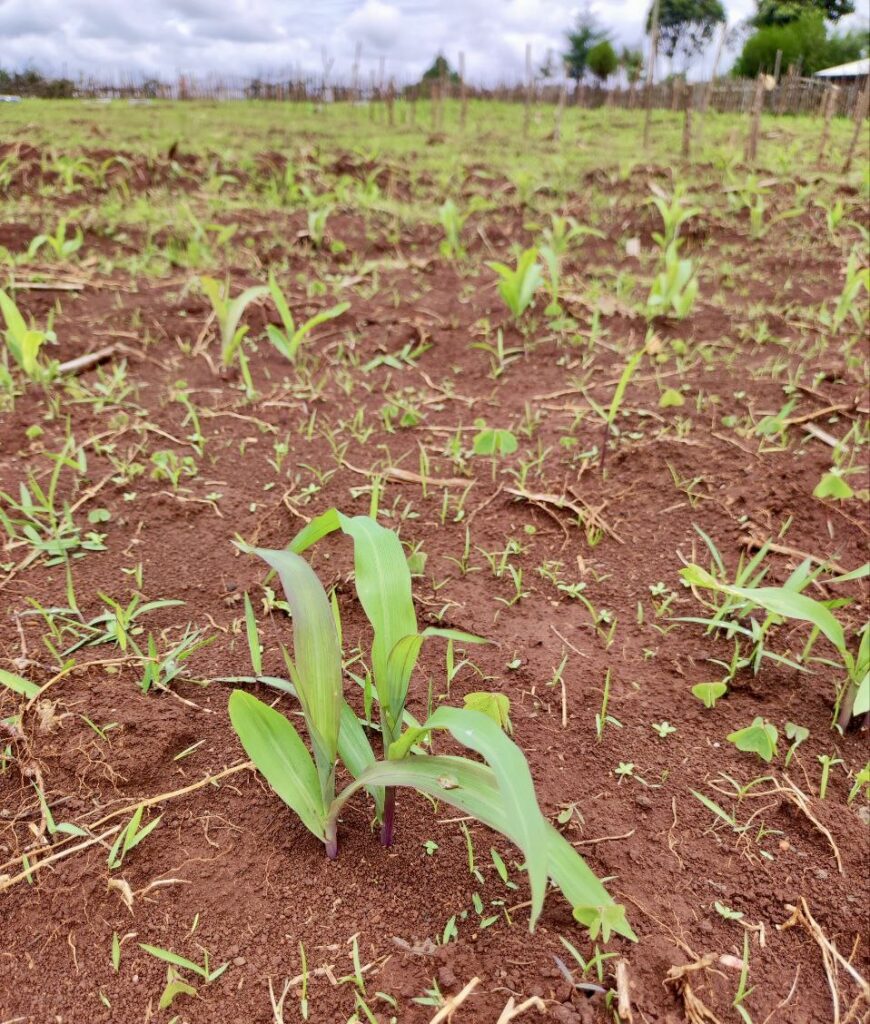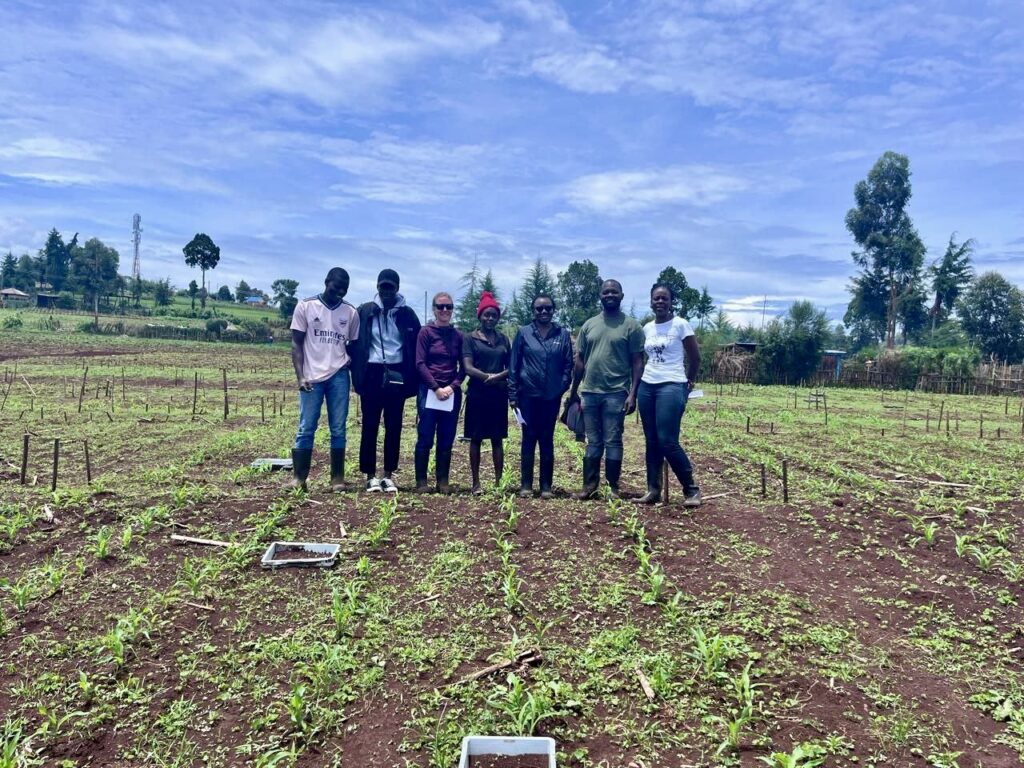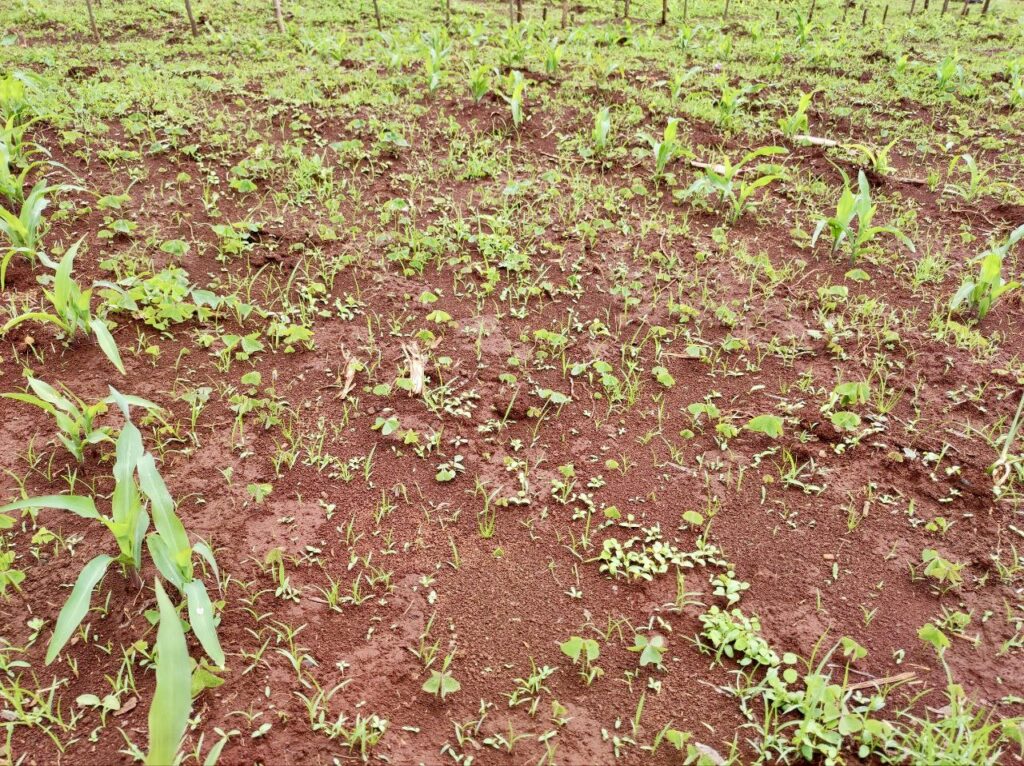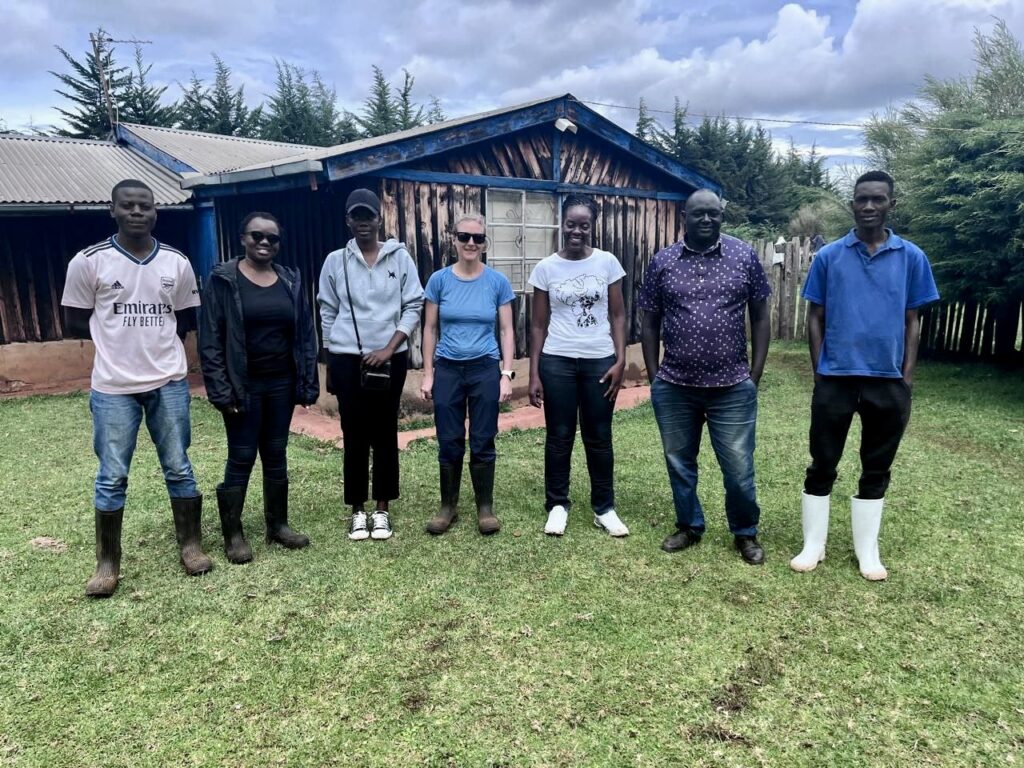Led by our collaborator Dr. Abigael Otinga at the University of Eldoret, last October we started the CRAPAE project to investigate soil chemistry, yield and plant growth, and greenhouse gas emissions under different agropastoral management practices in the Elgeyo-Marakwet county in the Rift valley region of Kenya. The project is funded by the RUFORUM Global Research Alliance Graduate Research Grants. This program aims at building the capability of graduate students and post-graduate scientists in Africa to conduct applied research on agricultural greenhouse gases in non-Annex I countries in Africa.
In this project we are looking at the impact of fertilisation – organic and synthetic, nitrogen and phosphorus – on crop yields, soil nutrients, and greenhouse gas emissions. The experimental set up also incorporates three cropping types: Maize, desmodium sp. and an intercrop of maize and desmodium. Maize is one of the most important cereal crops in Kenya, and desmodium is a key fodder crop. There have been very few studies into greenhouse gas emissions from croplands in Kenya, despite expectations that fertiliser use will increase strongly in coming decades. Food security is a key issue in this region, and well-planned agricultural development using the principles of agroecology could help improve food production while minimising excess environmental impact in this region.


Yesterday we visited the CRAPAE sites with MSc student Irine Odera, who is responsible for the site and carrying out the sampling. Irine has set up an impressive array of plots, and is collecting soil samples from each plot every two weeks, as well as greenhouse gas samples using manual chambers from a subset of the plots. We visited a site near the town of Chebiemit in the Marakwet West political division, and another site in Keiyo North, around 10 km north of the famous running town of Iten. Irine will follow the crops as they grow until harvest. She will measure the yield of maize and desmodium and compare this to the greenhouse gas emissions and soil nutrient profile in each of her treatments. We hope this data will help us understand this impact of different management practices and thus develop better recommendations for sustainable agricultural development in sub-Saharan Africa.


